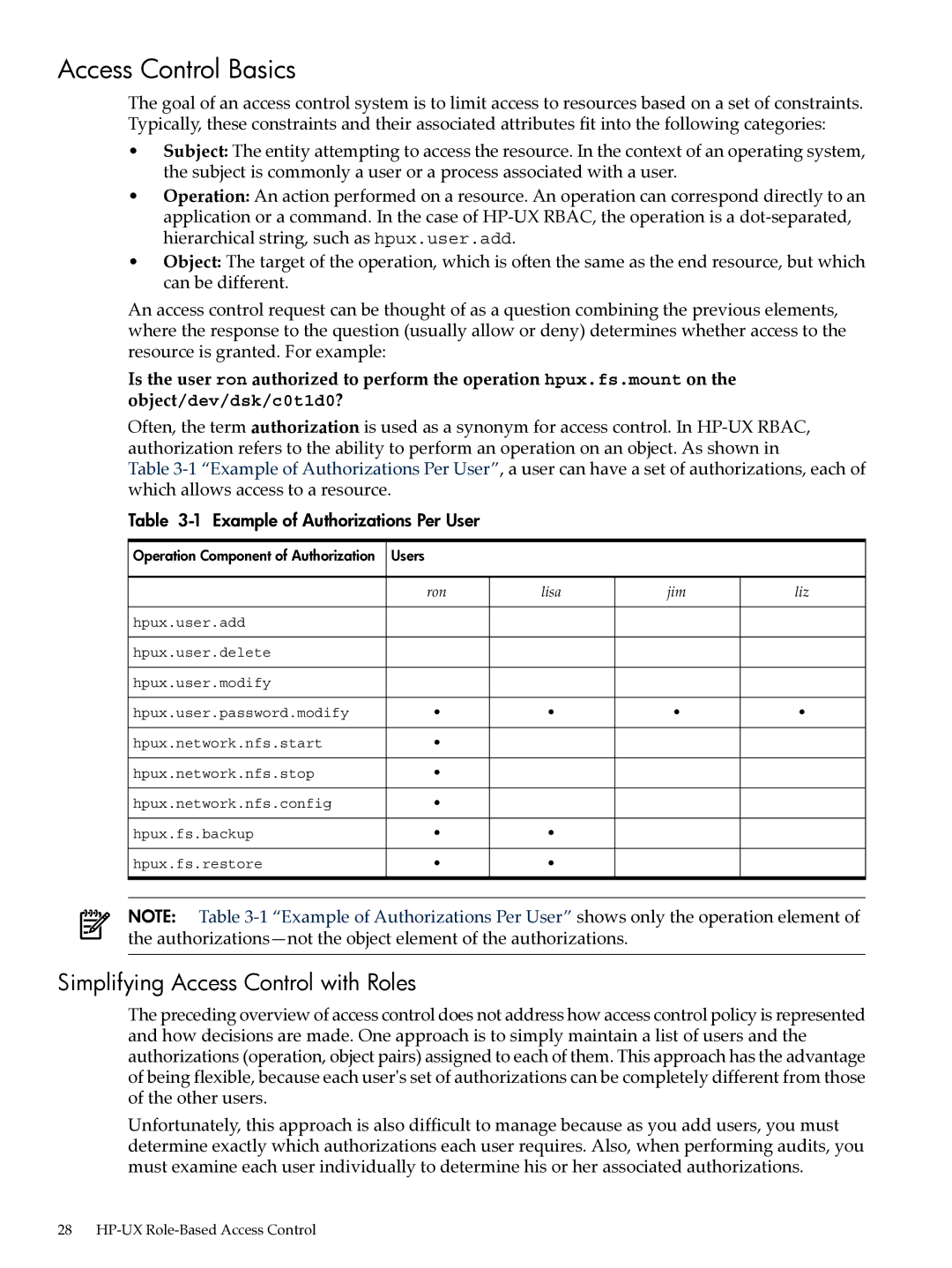
Access Control Basics
The goal of an access control system is to limit access to resources based on a set of constraints. Typically, these constraints and their associated attributes fit into the following categories:
•Subject: The entity attempting to access the resource. In the context of an operating system, the subject is commonly a user or a process associated with a user.
•Operation: An action performed on a resource. An operation can correspond directly to an application or a command. In the case of
•Object: The target of the operation, which is often the same as the end resource, but which can be different.
An access control request can be thought of as a question combining the previous elements, where the response to the question (usually allow or deny) determines whether access to the resource is granted. For example:
Is the user ron authorized to perform the operation hpux.fs.mount on the object/dev/dsk/c0t1d0?
Often, the term authorization is used as a synonym for access control. In
Table
Table 3-1 Example of Authorizations Per User
Operation Component of Authorization | Users |
|
|
|
| ron | lisa | jim | liz |
hpux.user.add |
|
|
|
|
hpux.user.delete |
|
|
|
|
hpux.user.modify |
|
|
|
|
hpux.user.password.modify | • | • | • | • |
hpux.network.nfs.start | • |
|
|
|
hpux.network.nfs.stop | • |
|
|
|
hpux.network.nfs.config | • |
|
|
|
hpux.fs.backup | • | • |
|
|
hpux.fs.restore | • | • |
|
|
NOTE: Table
Simplifying Access Control with Roles
The preceding overview of access control does not address how access control policy is represented and how decisions are made. One approach is to simply maintain a list of users and the authorizations (operation, object pairs) assigned to each of them. This approach has the advantage of being flexible, because each user's set of authorizations can be completely different from those of the other users.
Unfortunately, this approach is also difficult to manage because as you add users, you must determine exactly which authorizations each user requires. Also, when performing audits, you must examine each user individually to determine his or her associated authorizations.
28
